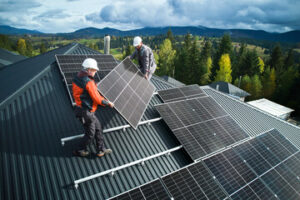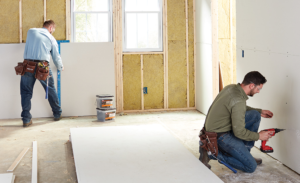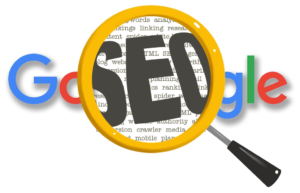MT Solar energy is an incredibly clean, sustainable source of electricity. It helps slow global warming, cuts air pollution and resource stress, and decreases heart disease and asthma attacks.
Generally speaking, solar panels require ample space on a south-facing roof. They are weather dependent, generating less energy in winter and at high usage times.
Monocrystalline

Monocrystalline solar panels are among the most widely installed and highest quality photovoltaic (PV) systems available. They are characterized by their uniform dark color and rounded edges, which reflects the high-purity silicon used in their construction. This smooth texture also helps to improve their ability to convert sunlight into electricity. As such, these solar panels have the best efficiency ratings and lifespans of all available types of PV panels.
Unlike polycrystalline solar panels, which use wafers cut from fragmented silicon crystals, monocrystalline solar panels are composed of a single silicon ingot that has been sliced into thin wafers. The crystalline structure of the ingot allows electrons to pass more smoothly through the wafers, which reduces resistance and maximizes energy conversion. This explains why monocrystalline solar panels typically have the highest power outputs of all PV systems.
Additionally, the monolithic structure of monocrystalline solar panels gives them a sleek appearance that complements many architectural styles. In fact, some research suggests that well-designed solar installations can increase a home’s resale value by three to four percent. This premium look makes monocrystalline solar panels a popular choice for visible roof installations, particularly in suburban neighborhoods and upscale homes.
Another benefit of monocrystalline solar panels is that they are able to generate more electricity in hot climates than polycrystalline models. This is a significant advantage because it cuts down on your electricity bills and shortens the payback period for your solar system.
Moreover, because monocrystalline solar panels can perform better in overcast and low-light conditions than other PV systems, they are often favored by homeowners who live in cloudy regions. They are able to produce a significant amount of energy on overcast days by absorbing diffused sunlight that breaks through the clouds.
Another reason why monocrystalline solar panels are a popular choice is because they don’t require as much maintenance as other types of PV systems. In addition to occasional cleaning, which can be done by hosing down the panels with water and scrubbing them down with a brush or sponge, monocrystalline solar panels require very little other care. They are able to produce electricity for years without needing replacement parts, and most manufacturers offer a 20-25-year warranty on their panels and components.
Polycrystalline
Known for their bluish hue and sometimes variegated pattern, polycrystalline solar panels are made from multiple silicon crystals that have been melted together. This process is less energy-intensive than the monocrystalline manufacturing method, making it more affordable to consumers. Polycrystalline solar panels also tend to perform better in low-light conditions than monocrystalline models, which can be a factor in determining their suitability for certain applications. However, they can also have a lower efficiency rating than monocrystalline solar panels, and they typically don’t have as long of warranties as their monocrystalline counterparts.
Both monocrystalline and polycrystalline solar panels are effective at converting sunlight into electricity. The primary difference is that monocrystalline solar cells are composed of a single silicon crystal, allowing electrons to flow through easily and resulting in higher efficiencies of up to 15%. On the other hand, polycrystalline solar panels are composed of multiple crystal fragments, which results in greater resistance and a lower efficiencies.
Another main difference is that monocrystalline solar panels have a lower temperature coefficient, which can improve their performance in hot climates. Polycrystalline solar panels, on the other hand, have a higher temperature coefficient and can have difficulty producing power in the afternoon.
While both types of solar panels are effective at generating renewable energy, they’re not interchangeable. It’s important to weigh factors like size constraints, aesthetics, and budget when deciding which type of solar panel is the best fit for your home or business.
The good news is that manufacturers are making significant advances in the production of both mono and polycrystalline solar panels, which should lead to a decrease in prices in the near future. For example, a startup called 1366 Tech has developed a machine that produces polycrystalline solar cells 30 times faster than current technologies, which could significantly reduce costs and boost efficiency. It’s expected that these advances will make mono and polycrystalline solar panels more competitive with other types of renewable energy products, such as wind turbines and battery storage systems. This will help expand the adoption of solar energy by enabling more people to access it with affordable, low-cost solutions.
Wide Spectral Response
The ability of solar panels to convert different wavelengths of sunlight into energy varies based on weather conditions. This includes cloudy days, when sunlight is not at its peak. Solar panels with a wide spectral response can produce more electricity by capturing a larger spectrum of light, including infrared and ultraviolet wavelengths.
The spectral response of solar cells is affected by the shunt resistance, and breakdown voltage of the junctions. In order to achieve a high solar cell performance, these parameters need to be optimised for the specific solar cell design. This can be done by combining multiple sets of current-voltage measurements with various light bias sources. This approach can also reveal information about the spectral response behaviour of multijunction solar cells.
For example, the ideal spectral response of a silicon solar cell is limited at long wavelengths because it cannot absorb photons with energies below the band gap. At shorter wavelengths, the semiconductor behaves more like an ideal p-n junction and is close to its maximum efficiency. Using a combination of current-voltage measurements and several light sources can help to determine the optimum shunt resistor and breakdown voltage for each individual junction in the solar cell.
This is especially important for high-efficiency multijunction solar cells. They often feature multiple p-n-n-GaAs/Si triple junctions. These structures can reach Air Mass 1.5 global spectrum power conversion efficiencies of 39 % or higher without the need for concentrators. This type of solar cell is also becoming increasingly popular due to its lower price and longer lifetime compared to traditional monocrystalline solar panels.
Achieving a good spectral response in these multijunction solar cells requires that each junction has low shunt resistance and a high breakdown voltage. This can be difficult to achieve without compromising on other key cell performance metrics such as short circuit current (Isc).
The spectral response of multijunction solar cells is often measured using an irradiance-mode absolute differential spectral response measurement system. This system uses an array of LEDs to illuminate the test solar cells. It can measure irradiance over an area of up to 160 mm by 160 mm. It can also provide a collimated irradiance for comparison with diffuse irradiance measurements.
Energy Storage
A solar panel’s energy storage capabilities are a key part of what makes them so versatile. Solar panels that store excess electricity are able to power homes during nighttime or on cloudy days, increasing the energy security of a property. This can also help reduce reliance on the electric grid during peak hours or in times of outages.
The energy storage capabilities of solar panels are dependent on a number of factors. For example, the orientation of the panels is important to ensure they are capturing the most sunlight possible. Moreover, the design of the panels plays a role in how much electricity they can produce. Monocrystalline cells, which are made of a single solid piece of silicon, offer more space for electrons to flow and thus are more efficient than polycrystalline cells. Other factors that can affect efficiency include the type of protective back sheet and the color. For example, dark colors like black absorb more heat than blue or green, which can significantly reduce a panel’s efficiency.
Once a solar panel converts sunlight into electricity, it must pass through an inverter to create alternating current (AC). Most household appliances and electrical systems need AC because it is what allows them to operate. The inverter also changes the direct current (DC) into alternating current so that it can be used by your home or business.
Solar battery storage is an excellent addition to a solar energy system because it provides the ability to save and use the excess electricity generated by your panels during sunny periods. It can then be used during cloudy weather, at night or during an outage. While it does not make your home completely self-sufficient, solar and battery storage helps to significantly reduce a homeowner’s electric bills and is a better alternative to environmentally unfriendly fossil fuels.








